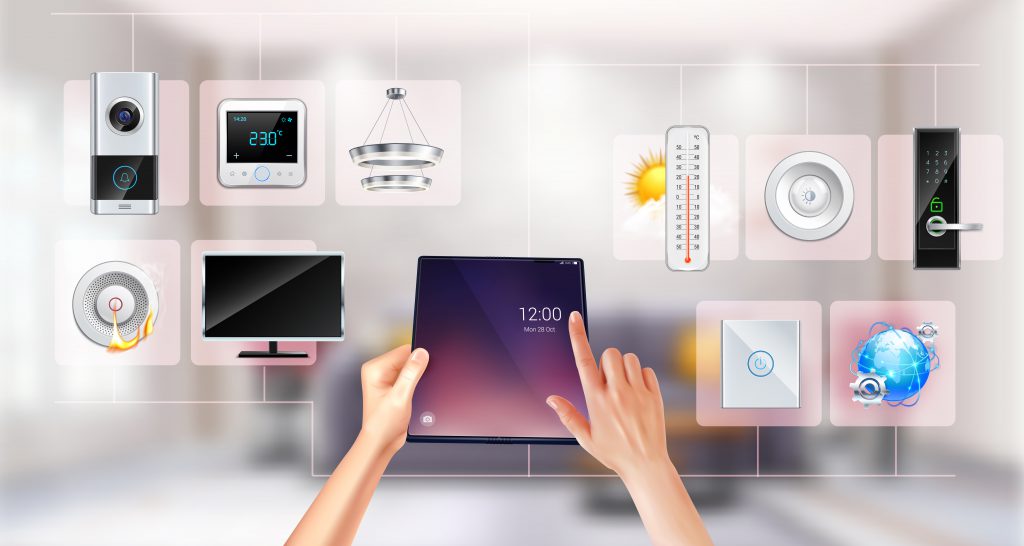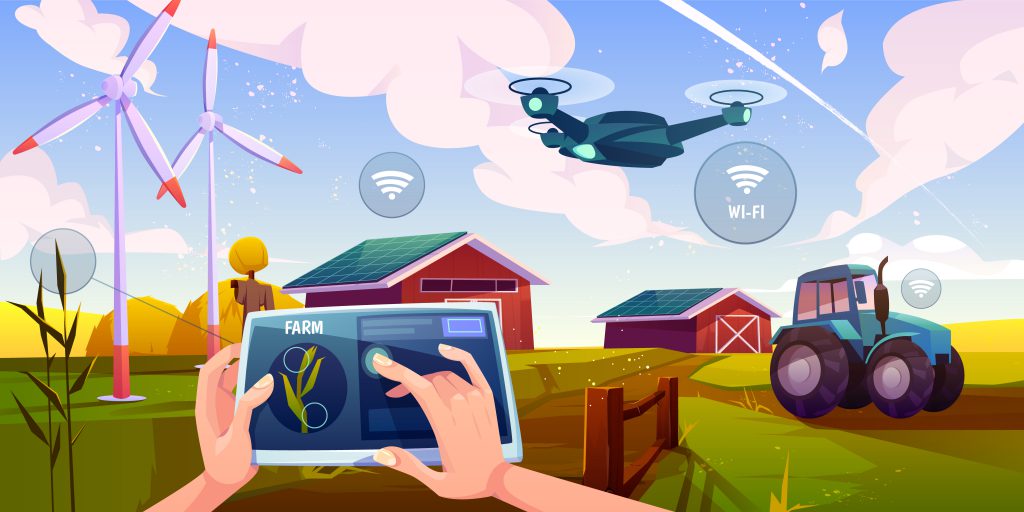What is IoT? When did it emerge? What benefits does it provide? In which areas is it used? What does it stand for? How does it work? Let’s answer these and similar questions together.
What is IoT?
The Internet of Things (IoT) describes a network of physical objects embedded with sensors, software and other technologies to connect and exchange data with other devices and systems over the internet. These devices range from ordinary household objects to advanced industrial vehicles.
when did the internet of things (IoT) emerge?
The term “Internet of Things” or IoT was first coined by Kevin Ashton in 1999. However, IoT started to gain global momentum in 2011 when it was added to Gartner’s list of emerging technologies. As of 2021, there are 21.7 billion active connected devices in the world today. More than 11.7 billion of these (54 per cent) are IoT devices. This means there are more non-IoT devices in the world than IoT devices.

APPLICATION AREAS
Smart home application: IoT devices are part of the broader concept of home automation, which can include lighting, heating and air conditioning, media and security systems, and camera systems. Long-term benefits include automatic switching off of lights and electronic devices. Or energy saving by making households aware of usage.
A smart home or automated home can be based on a platform or centres that control smart devices and appliances. For example, manufacturers using Apple’s HomeKit can have their home products and accessories controlled by an app on iOS devices such as iPhone and Apple Watch. This could be a dedicated app or native iOS apps such as Siri. This can be demonstrated in the case of Lenovo’s Smart Home Essentials, a line of smart home devices controlled via Apple’s Home app or Siri without the need for a Wi-Fi bridge.
Elderly care One of the key applications of the smart home is to provide assistance to elderly individuals and people with disabilities. These home systems use assistive technology to cater for an owner’s specific disabilities. Voice control can assist users with vision and mobility limitations, while alert systems can be connected directly to cochlear implants worn by hearing-impaired users. They can also be equipped with additional safety features, including sensors that monitor medical emergencies such as falls or seizures. Smart home technology implemented in this way can provide users with more freedom and a higher quality of life.
Transport application: IoT can help integrate communication, control and information processing in various transport systems. The application of IoT extends to all aspects of transport systems – vehicle, infrastructure and driver or user. The dynamic interaction between these components of a transport system enables inter- and intra-vehicle communication, intelligent traffic control, intelligent parking, electronic toll collection systems, logistics and fleet management, vehicle control, safety and roadside assistance.
IoT TYPES
- Consumer IoT – Primarily for everyday use. For example: home appliances, voice assistance and lighting fixtures.
Commercial IoT – Used in the health and transport sectors. For example: smart pacemakers and monitoring systems.
Military Things (IoMT)- It is used for the application of IoT technologies in the military field. For example: surveillance robots and wearable biometrics used by humans for warfare.
Industrial Internet of Things (IIoT)- It is used in industrial applications such as manufacturing and energy sectors. For example: Digital control systems are used for smart agriculture.
Infrastructure IoT – Used for connectivity in smart cities. For example: infrastructure sensors and management systems.
IoT BENEFITS:
The Internet of Things offers various advantages to organisations. Some benefits are industry-specific and some apply across multiple industries. Some of the common benefits of IoT enable businesses to:
- Monitoring general business processes
Improving the customer experience.
Saving time and money.
Increasing employee productivity.
Integrate and adapt business models.
Making better business decisions

IoT encourages companies to rethink the way they approach their business. It gives them tools to improve their business strategies.
IoT benefits farmers in agriculture by making their work easier. Sensors collect data on rainfall, humidity, temperature and soil content, among other factors that help automate farming techniques.
The ability to monitor operations surrounding infrastructure is also a factor where IoT can help. For example, sensors can be used to monitor events or changes in structural buildings, bridges and other infrastructure. This brings benefits such as cost savings, time saved, quality of life workflow changes and paperless workflow.
A home automation business can leverage IoT to monitor and change mechanical and electrical systems in a building. On a larger scale, smart cities help citizens reduce waste and energy consumption.
IoT touches every sector, including businesses in healthcare, finance, retail and manufacturing.
What are the Pros and Cons of IoT?
Some of the advantages of IoT are:
- It accesses information from anywhere at any time on any device.
It provides enhanced communication between connected electronic devices.
Transferring data packets over a connected network saves time and money.
Automating tasks that help improve the quality of an enterprise’s services and reduce the need for human intervention.
Some disadvantages of IoT:
- As the number of connected devices increases and information is shared between devices, the potential for a hacker to steal information increases.
Organisations eventually have to deal with a large number, even millions of IoT devices. In this case, it will be difficult to collect data from all these devices and manage them.
If there is a fault in the system, every connected device is likely to be corrupted.
Since there is no international harmonisation standard for IoT, different
